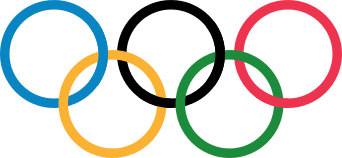Rio 2016 Olympics: science behind the sports Inspire article
How science helps athletes to succeed

This year, a record number of countries are competing in a record number of sports at the Olympic Games in Rio de Janeiro, Brazil. Whilst training, fitness and sheer talent will determine the winners, there are a number of scientific factors that also play a part.
For runners, it is principally the latest track surfaces that enable them to do their best. Unlike leisure runners, who rely on their sports shoes to provide cushioning and spring, professional runners rely on the track. Choosing the right materials requires careful consideration: the track must provide enough shock absorption to avoid injury, at the same time as offering a stable base to allow an athlete to push forward.
Off the running track, and onto the field, it’s all about aerodynamics for determining the perfect shot in sports such as football. Players use tricks to make the ball move in different ways, and understanding the flow of gases can give an insight into what happens to balls in flight. Table tennis players in particular are masters of using the Magnus effect to outwit their opponents: if you watch a game on television, a view from above can reveal the side-to-side curving of serves with different spins.
Whilst physics and track technology both help competitors to succeed, hard work and training are still fundamental. We know that there are many benefits to exercise, but the reasons why are not so clear. On-going research is aiming to pin down the changes that occur in muscles when we exercise, and understand how our muscles ‘know’ to respond differently to different types of training. The scientists are also finding out whether ‘muscle memory’ – the idea that today’s exercise has effects on our muscles years from now – really exists, and how it works.
Enjoy watching the Olympic Games and now while you cheer for your country’s athletes you can consider the contribution of science and technology to those Olympic medals!
Find more sports related articles in our ‘sports series’ here.





